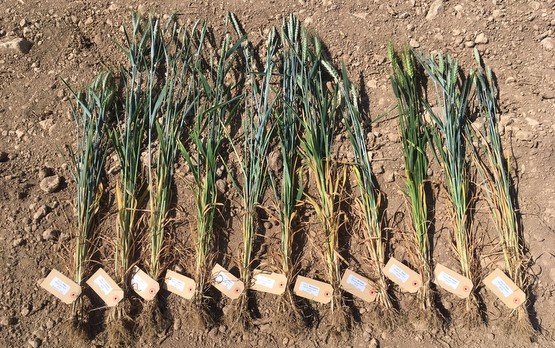Optimizing roots for sustainable crop production in Europe – pure cultures and cover crops
MaxRoot-C provides data on root carbon inputs across Europe in order to estimate the soil carbon sequestration potential of different agricultural measures.
Carbon farming is essential to reduce the impact of climate change. Mobilizing crop producers to support this transformation requires promotion of cropping systems with equivalent profitability but higher soil carbon sequestration potential. One of the most viable yet overlooked options is to increase carbon inputs to the soil through the roots of main and cover crops.
Roots are the key to climate change adaptation and mitigation. With more and deeper roots, agricultural crops can access deeper water and nutrient resources, making them more resilient to drought events under climate change conditions. Roots are also the main precursor of soil organic carbon and contribute much more efficiently to building up soil carbon reserves compared to other biomass that remains in soils. However, there is a tremendous lack of data on the extent and distribution of roots for different crop types and varieties and the options to maximize root carbon input to the soil to enhance soil carbon.
Current data and knowledge do not allow for prediction of root derived soil organic carbon storage in agricultural soils, specifically in relation to the nature versus nurture properties of roots (genotype x environment interaction). We are therefore working closely with the H2020 project INVITE to quantify the root biomass and depth of ten commercially important varieties of winter wheat and maize on 15 sites across Europe. These data will shed light on the genetic vs. pedoclimatic drivers of root characteristics and will be used to model the soil carbon sequestration potential by variety selection on a European scale.
To better understand the importance of genotypic variability in climate change adaptation, we are also looking at those root traits that determine crop resource acquisition, such as carbon rhizodeposition, root system architecture in the topsoil and subsoil and mycorrhizal abundance. For this purpose, we are using well-established field and lab methods, e.g. in-situ multiple pulse labelling with 13C, 2D and 3D root scanning and microscopy.
Project Partners
- AGES
- AU
- BOKU
- CSIC
- CZU
- INRAE
- LAMMC
- NIBIO
- SLU
- Thünen






